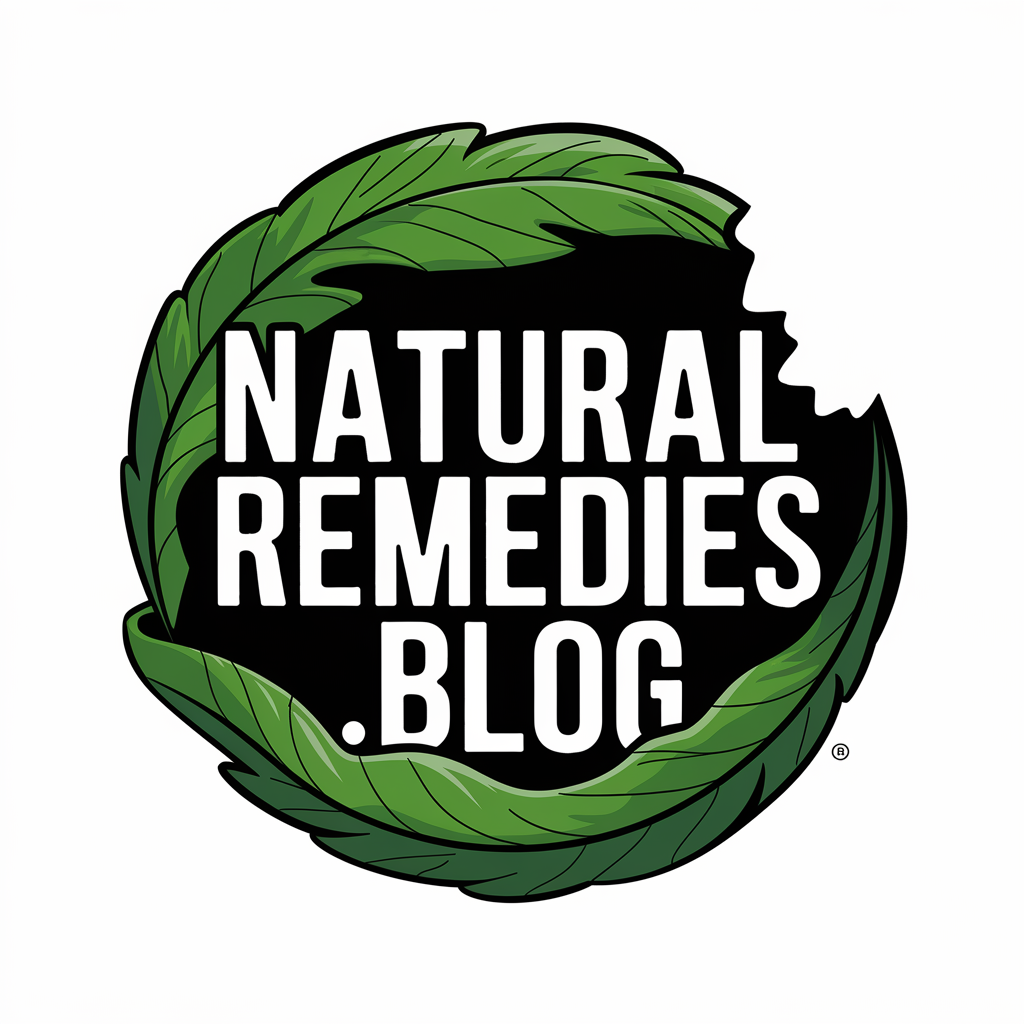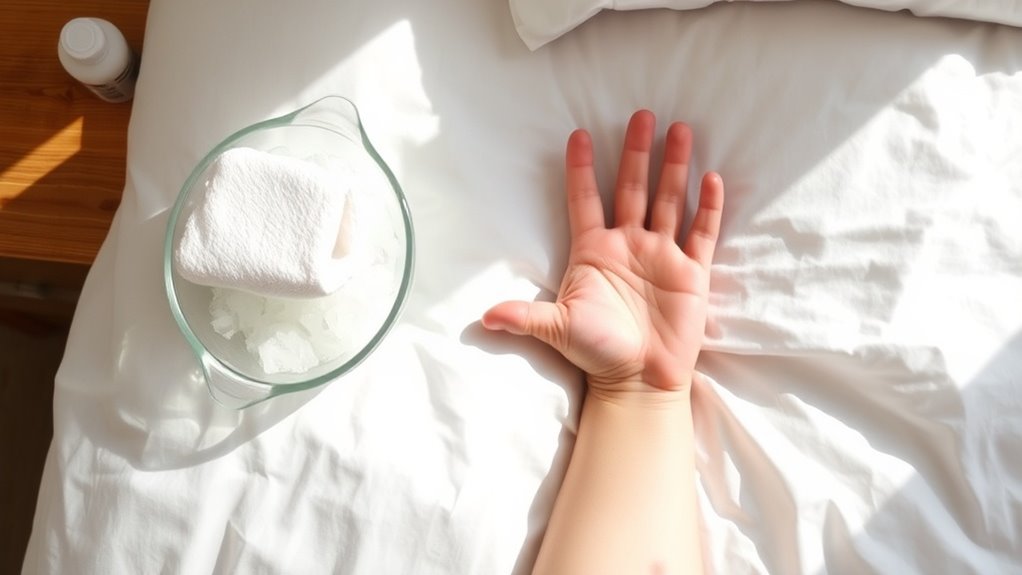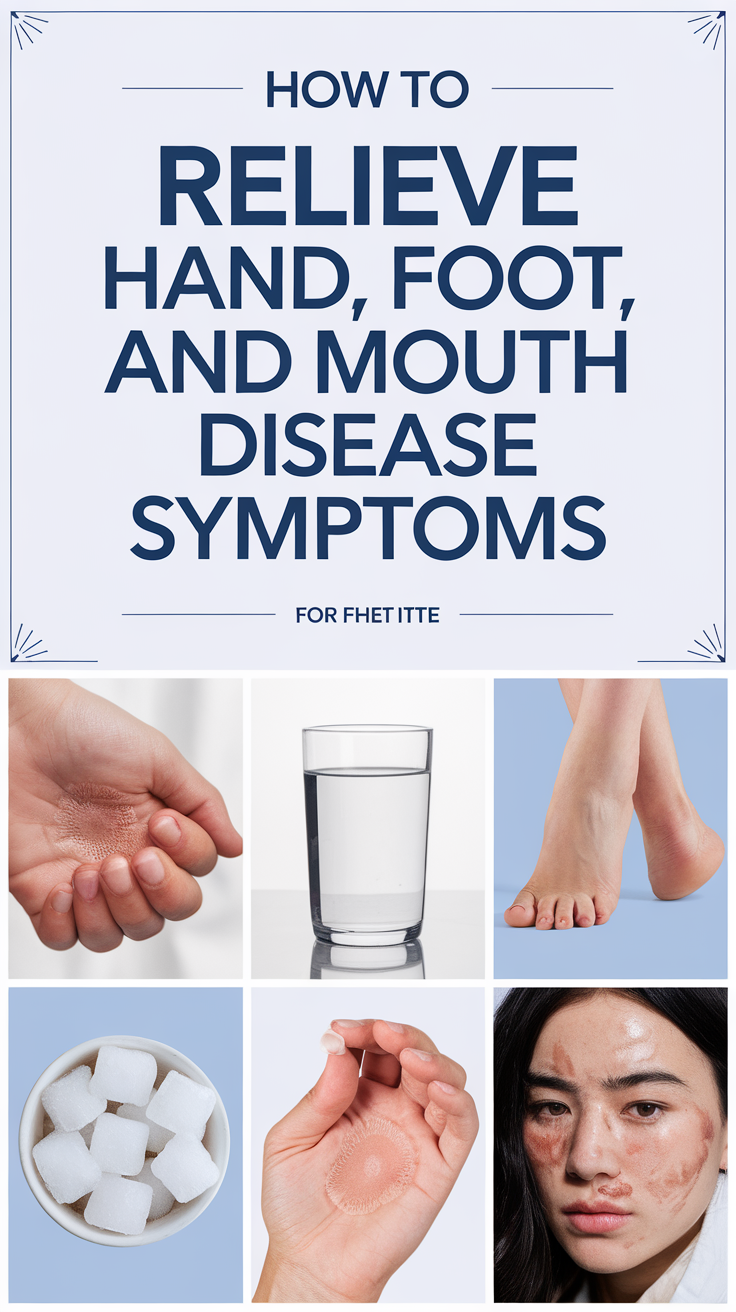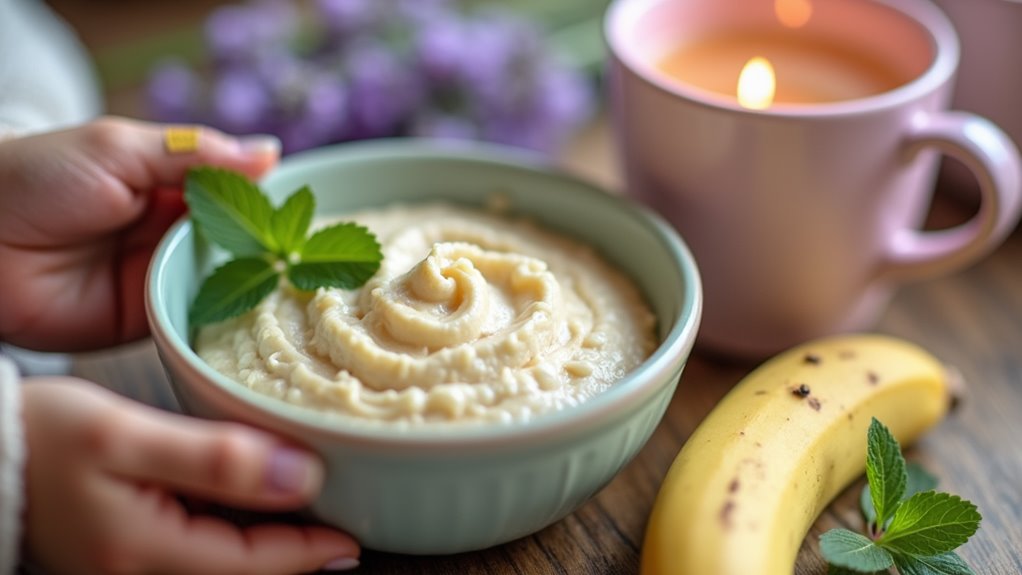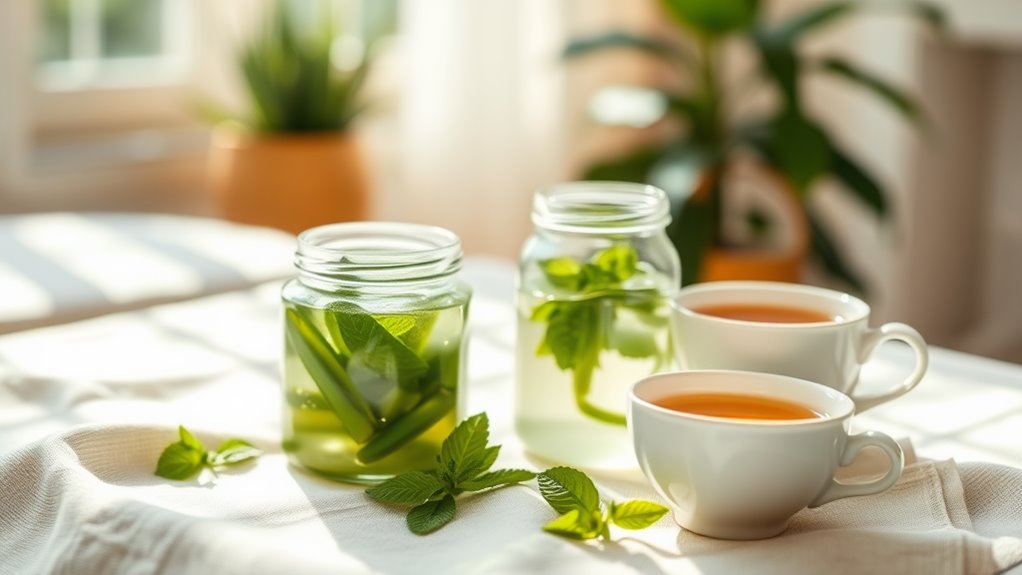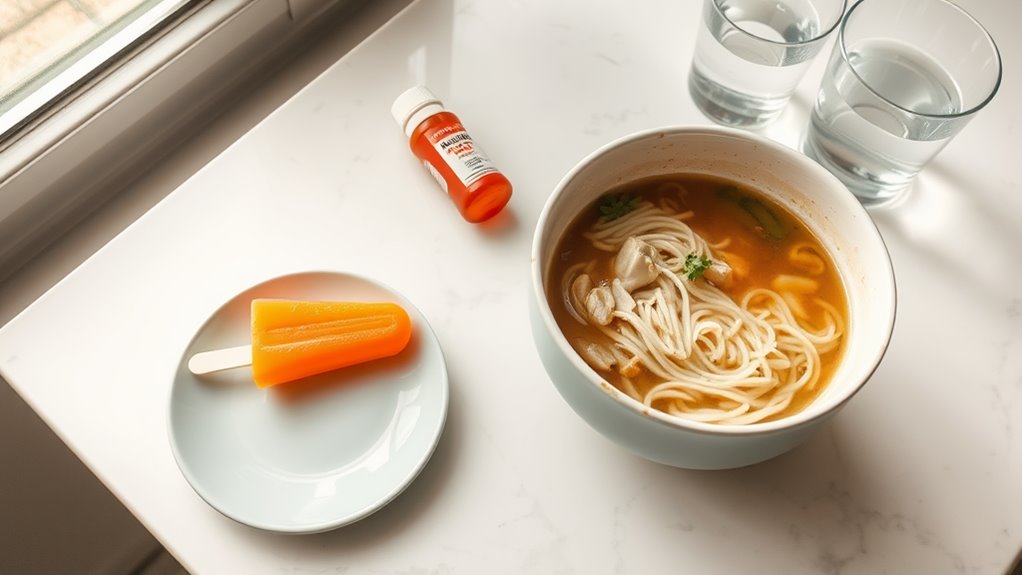How I Treated My Child’s Hand, Foot, and Mouth at Home
Understanding Hand, Foot, and Mouth Disease Symptoms
Hand, foot, and mouth disease (HFMD) typically presents with a distinct set of symptoms that develop 3-6 days after exposure to the virus.
You’ll first notice fever, sore throat, and decreased appetite. Within 1-2 days, painful sores appear in the mouth, making eating and drinking difficult.
A red rash with small blisters then develops on the palms, soles, and sometimes buttocks.
Before attempting hand foot and mouth disease remedies, it’s crucial to recognize these symptoms and distinguish them from other childhood illnesses.
While usually mild, HFMD can cause dehydration, especially when mouth sores interfere with fluid intake.
Essential Home Remedies and Treatments
When managing hand, foot, and mouth disease at home, you’ll need to focus on three key treatment areas: pain management, dietary adjustments, and skin care.
You can use over-the-counter pain relievers like acetaminophen or ibuprofen to reduce fever and discomfort, while offering cold foods and drinks to soothe mouth sores and maintain hydration.
For skin rashes and blisters, it’s essential to keep affected areas clean and dry, avoiding any harsh soaps or direct pressure that could cause further irritation.
Pain Relief Methods
Since the discomfort of hand, foot, and mouth disease can be significant, several pain relief methods can help manage symptoms at home.
You can administer over-the-counter pain relievers like acetaminophen or ibuprofen to reduce fever and alleviate discomfort. For mouth sores, try using an oral numbing gel containing benzocaine, but don’t exceed recommended dosages.
Cold foods like ice cream or popsicles can temporarily numb painful areas. For skin blisters, apply calamine lotion to reduce itching. A cool bath with colloidal oatmeal can soothe irritated skin.
Always check with your pediatrician before using any medications, especially for children under two years old.
Cold Foods and Drinks
Cold foods and drinks play a key role in managing hand, foot, and mouth disease symptoms. When mouth sores make eating painful, cold temperatures can temporarily numb the area and provide relief, making it easier to maintain proper nutrition and hydration during the illness.
-
Offer ice pops, frozen yogurt, or smoothies to soothe throat pain and prevent dehydration.
-
Serve cold milk, water, or electrolyte drinks through a straw to minimize contact with sores.
-
Present soft, chilled foods like pudding, applesauce, or refrigerated fruit.
-
Avoid acidic, salty, or spicy foods that can irritate mouth sores and cause discomfort.
Skin Rash Care
Managing skin rashes effectively during hand, foot, and mouth disease requires a combination of gentle care and targeted treatments.
Apply calamine lotion to affected areas to reduce itching and discomfort. You’ll want to keep the rashes clean and dry, using mild soap and lukewarm water during bathing.
Don’t pop any blisters, as this can lead to infection. Consider using over-the-counter antihistamines to relieve itching, but consult your doctor first.
Dress your child in loose-fitting, breathable cotton clothing to prevent irritation.
For severe rashes, your healthcare provider may recommend topical medications or medicated lotions.
Managing Fever and Discomfort
When your child develops a fever and discomfort from hand, foot, and mouth disease, you’ll need to focus on symptom relief using over-the-counter medications and comfort measures.
Monitor their temperature regularly and contact your healthcare provider if the fever exceeds 102°F (39°C).
- Give acetaminophen or ibuprofen as directed by your pediatrician to reduce fever and pain.
- Apply calamine lotion to itchy rashes to provide temporary relief.
- Offer cold foods like popsicles or ice cream to soothe mouth sores.
- Use a cool-mist humidifier in your child’s room to ease throat discomfort. Additionally, ensure to offer plenty of soft, cool foods that are gentle on the mouth sores to aid in their recovery.
Keeping Your Child Hydrated
You’ll need to ensure your child drinks cool fluids frequently throughout the day, as the mouth sores can make swallowing painful and lead to dehydration.
Offering ice-cold water, milk, or clear juice in small, frequent sips can help overcome their reluctance to drink.
Frozen treats like sugar-free popsicles serve dual purposes: they provide necessary hydration while numbing painful mouth sores.
Cool Drinks Throughout Day
Maintaining proper hydration is crucial when your child has hand, foot, and mouth disease, as the painful mouth sores can discourage drinking.
Offer cool beverages throughout the day to soothe discomfort and prevent dehydration.
- Serve ice-cold water or diluted fruit juices through a straw, positioning it towards the back of the mouth to bypass sores.
- Provide frozen treats like sugar-free popsicles that numb pain while increasing fluid intake.
- Blend smoothies with coconut water and frozen fruit to boost electrolytes.
- Avoid acidic drinks like citrus juices or carbonated beverages that can irritate mouth sores.
Popsicles Beat Painful Sores
Popsicles serve as both a comforting treat and an effective hydration tool for children suffering from hand, foot, and mouth disease. Their numbing effect temporarily relieves mouth sores while ensuring necessary fluid intake.
| Type | Benefits | Precautions |
|---|---|---|
| Fruit | Natural sugars, vitamins | Check for citrus sensitivity |
| Ice | Numbing effect, hydration | Don’t freeze too hard |
| Yogurt | Probiotics, protein | Watch dairy tolerance |
| Pedialyte | Electrolytes, minerals | Follow age guidelines |
You’ll want to offer popsicles every 2-3 hours during waking hours. Choose sugar-free options when possible, and avoid acidic flavors that might irritate sores. Monitor your child’s intake to ensure adequate hydration.
Soothing Skin Rashes and Blisters
Although hand, foot, and mouth disease blisters can be painful and itchy, several home remedies can provide relief. When treating skin rashes and blisters, it’s essential to focus on gentle, non-irritating solutions that won’t aggravate the condition.
-
Apply calamine lotion to affected areas to reduce itching and discomfort.
-
Take lukewarm baths with colloidal oatmeal to soothe irritated skin.
-
Use over-the-counter hydrocortisone cream (1%) sparingly on rashes.
-
Keep skin clean and dry, avoiding harsh soaps or rubbing.
Don’t pop blisters, as this can lead to infection and delayed healing.
If symptoms worsen or don’t improve within 7-10 days, consult your healthcare provider.
Creating a Comfortable Recovery Environment
Since recovery from hand, foot, and mouth disease can take up to two weeks, creating a comfortable environment is crucial for healing.
Keep room temperatures between 68-72°F (20-22°C) to prevent excess sweating that could irritate blisters. Use soft, breathable cotton bedding and change it daily to minimize bacterial growth. Remove harsh fabrics or materials that might scratch affected areas.
Set up entertainment options that don’t require physical contact, like audiobooks or gentle music. Maintain good air circulation with a clean humidifier to ease throat discomfort. Additionally, ensure that hands are regularly washed to reduce the risk of spreading the infection in the home.
Create a designated rest area away from household activity to reduce stress and promote sleep.
When to Contact Your Healthcare Provider
While most cases of hand, foot, and mouth disease resolve with home care, specific symptoms require immediate medical attention. Your healthcare provider should evaluate symptoms that could indicate complications or severe cases.
-
Fever that persists beyond three days or reaches 104°F (40°C)
-
Signs of dehydration, including decreased urination, dry mouth, or lethargy
-
Severe mouth sores that prevent drinking or eating for more than 24 hours
-
Unusual neurological symptoms, such as extreme irritability, neck stiffness, or seizures
Don’t hesitate to contact your doctor if you’re unsure about your child’s symptoms or if their condition worsens significantly.
